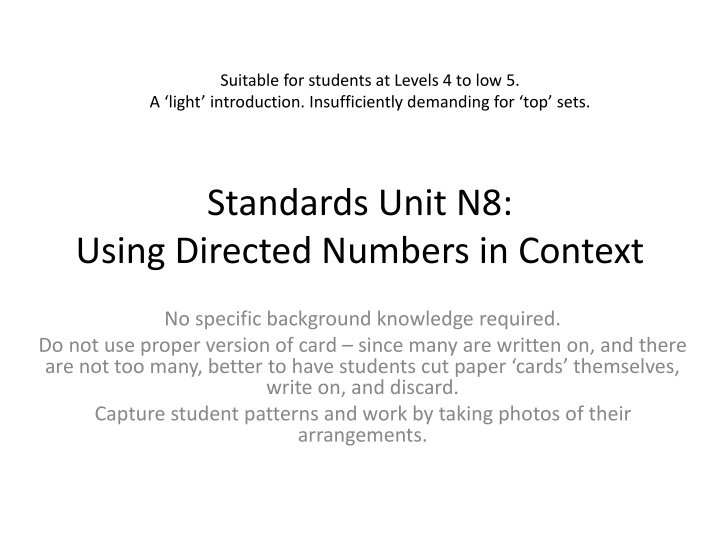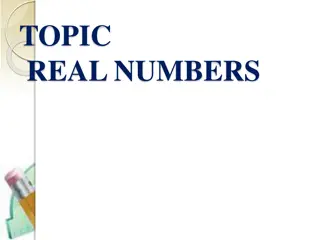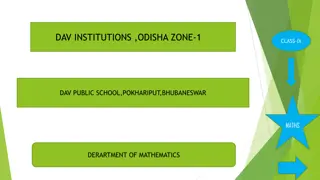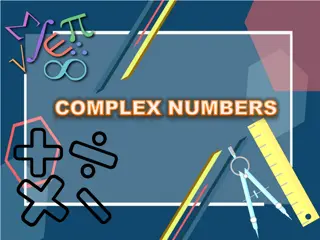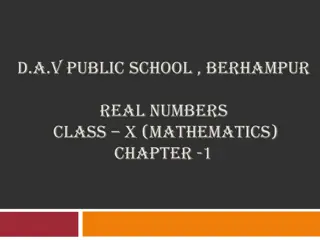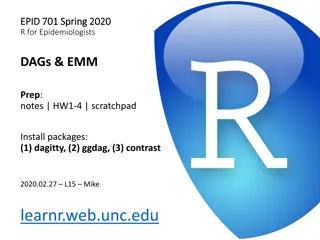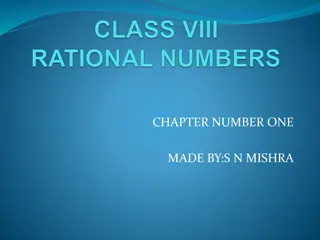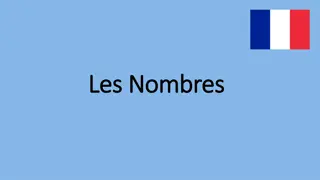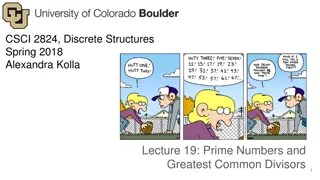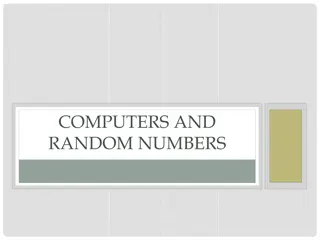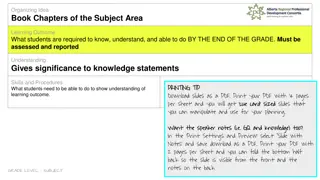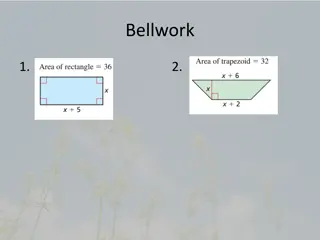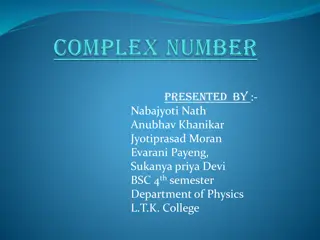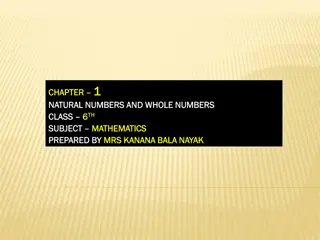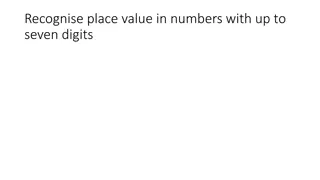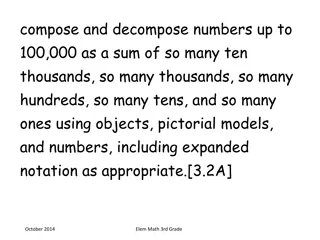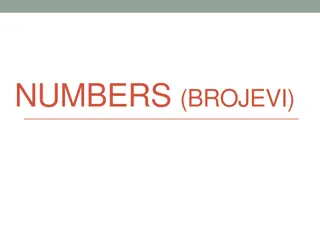Standards Unit N8: Using Directed Numbers in Context
Engage students at Levels 4-5 in a hands-on city temperature comparison activity using directed numbers. Students work in pairs to arrange city and temperature change cards, calculate missing temperatures, and explore adding positive and negative numbers. This interactive lesson requires no specific background knowledge and is suitable for a whole-class activity. Encourage students to arrange cards methodically, promoting a deeper understanding of directed numbers in context.
Download Presentation

Please find below an Image/Link to download the presentation.
The content on the website is provided AS IS for your information and personal use only. It may not be sold, licensed, or shared on other websites without obtaining consent from the author.If you encounter any issues during the download, it is possible that the publisher has removed the file from their server.
You are allowed to download the files provided on this website for personal or commercial use, subject to the condition that they are used lawfully. All files are the property of their respective owners.
The content on the website is provided AS IS for your information and personal use only. It may not be sold, licensed, or shared on other websites without obtaining consent from the author.
E N D
Presentation Transcript
Suitable for students at Levels 4 to low 5. A light introduction. Insufficiently demanding for top sets. Standards Unit N8: Using Directed Numbers in Context No specific background knowledge required. Do not use proper version of card since many are written on, and there are not too many, better to have students cut paper cards themselves, write on, and discard. Capture student patterns and work by taking photos of their arrangements.
Students will work in PAIRS. 4 re-usable, A4 City temperature cards (for whole class activity) Single consumable A4 worksheet per group (pair). Contains both card types. Use camera to take photos of card arrangements. This will also motivate students to arrange them methodically, rather than discard once missing numbers calculated once,
London 13oC
Moscow -8oC
Montreal -11oC
Madrid 20oC
Notes to start. 4 students given the A4 City temperature cards, and invited to stand at front. Pairs of students pre-arranged. Probably better if more-able students work with less-able.
City Line Up in Order of Temperature Coldest to Hottest
In Pairs First, quickly cut out the cards from the worksheet. Can you guess what I will be asking you to do?
In Pairs Arrange the City cards beside the Temperature Change cards. City cards Temperature Change cards You can then write in the correct temperature at Anchorage Work out all the missing temperatures in this way.
Final Temperature Missing This shows how to ADD a positive number to a negative number What do you think is the answer to -5 + (+7) ?
Starting Temperature Missing This shows how to SUBTRACT a negative number from a positive number What do you think is the answer to +3 - (-7) ?
Change in Temperature Missing This shows how to SUBTRACT a positive number from a negative number What do you think is the answer to -8 - (+3) ?
Combining Temperature Changes This shows how to ADD a negative number to another negative number What do you think is the answer to -2 + (-12) ?
Where else are negative numbers used? Bank accounts 400 Pay in 150. 200 Pay in another 100. Spend 200. Spend another 200. 0 How much money do you have in your bank account now? - 200 - 400 What does this actually mean? So why don t you hear people say they have negative 150? With money, we say overdrawn rather than negative , but it means the same thing!
Where else are negative numbers used? What could this actually mean?...
Why do Negative numbers sometimes seem difficult? Unfortunately, we use the minus sign to mean two different things: subtraction e.g. 6 3 negative e.g. -7 It will help you a great deal if you never say minus . Say either subtract , or negative , and you will get more answers right. Try reading these out loud, but do not say minus . -7 + 5 3 + -4 -8 - 5 -10 + 2 -1 - 5 -4 - -5
